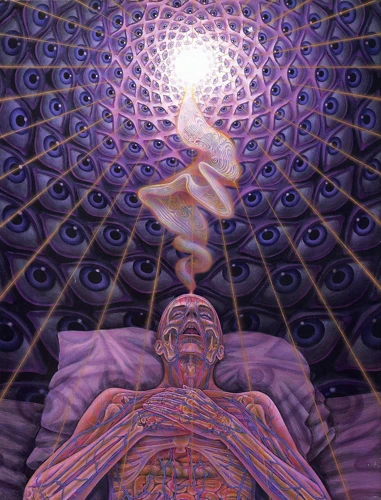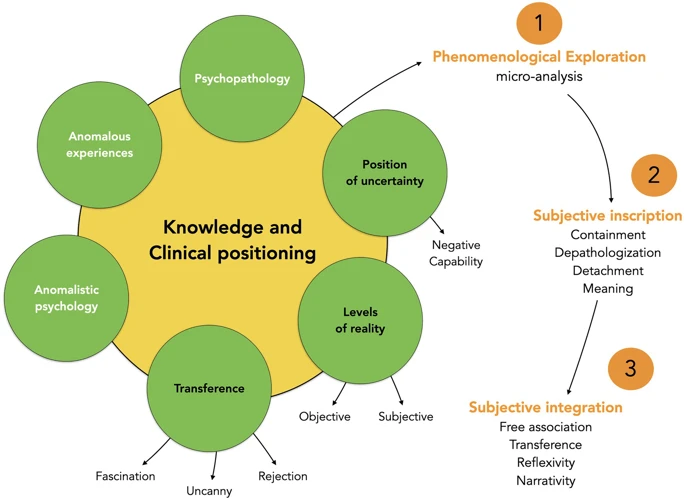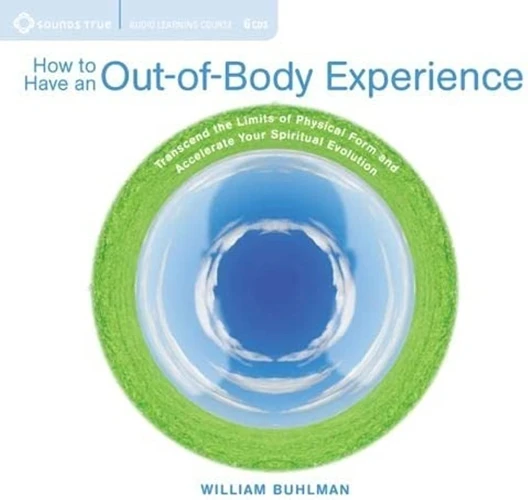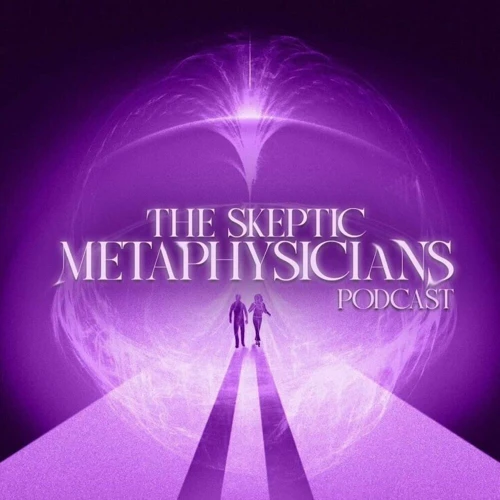In the realm of spirituality, one of the most intriguing experiences a person can encounter is the phenomenon of astral projection or near-death experience. These instances may appear as mere dreams to some, yet they hold a significant place in the beliefs of many cultures and religions. Some may wonder, how can one differentiate a spiritual encounter from a dream? Are astral projections and near-death experiences the same? This article will delve into the characteristics and definitions of each, as well as discuss the techniques to induce them. We’ll discuss how to distinguish spiritual encounters from regular dreams and how to differentiate astral projections from near-death experiences. We’ll touch on the benefits, precautions or risks, and cultural, religious, and scientific beliefs related to each of these phenomena.
Dreams

When we close our eyes at night and drift off to sleep, our mind takes us on a journey of its own. We encounter worlds beyond the realm of reality, engage in conversations with people we’ve never met, and experience sensations that seem almost too real to be confided to the subconscious. Yes, we’re talking about dreams. These enigmatic experiences often perplex us, leaving us wondering whether they are just a fabrication of our imagination or a manifestation of something deeper. Let’s delve deeper into the definition and characteristics of dreams to gain a better understanding of this mystical experience.
Definition of Dreams
Dreams are a phenomenon that has puzzled humanity for centuries. According to expert studies, dreams are vivid experiences that occur during REM (Rapid Eye Movement) sleep. During REM sleep, the brain becomes more active, and the body becomes immobile. This allows the mind to create scenarios that are often surreal, illogical or nonsensical. Dreams can be experienced in many different ways and involve all kinds of activities or events.
To further explain what a dream is, refer to the following table:
| Term | Definition |
|---|---|
| Nightmares | Disturbing and vivid dreams that evoke feelings of fear, anxiety, or sadness. These can be caused by real-life events or psychological disturbances. |
| Lucid Dreams | Dreams where the person is aware that they are dreaming and can actively control the events within the dream. |
| Recurring Dreams | Dreams that repeat themselves often, sometimes for years. These may be symbolic of unresolved issues in the dreamer’s life. |
| False Awakening | A dream in which the person wakes up in their dream, believing that they are awake in reality. This can lead to confusion and disorientation upon actual awakening. |
| Prophetic or Premonition Dreams | Dreams that seem to predict future events or offer guidance or insight into a person’s life. |
Despite the many different types of dreams, they all have one thing in common – their connection to the subconscious mind. Dreams are often interpreted as reflections of the dreamer’s current feelings or experiences. They can also be interpreted symbolically, representing deeper subconscious issues or fears.
Characteristics of Dreams
Dreams are mysterious and fascinating experiences that are unique to each individual. Although dreams vary greatly in content and structure, they tend to share some common characteristics. Here are some key characteristics of dreams:
- Visual imagery: Dreams often involve vivid and sometimes surreal visual imagery. These images can be fleeting or long-lasting, and may be in color or black and white.
- Emotions: Dreams are often accompanied by strong emotions, such as fear, anxiety, happiness, or sadness. These emotions may be influenced by events that have occurred in the dream or may be unrelated to the dream content.
- Sensory experiences: Dreams can involve all five senses, including smell, taste, touch, and sound. These sensory experiences can feel as real as waking life.
- Illogical content: Dreams often contain content that is illogical or nonsensical. People and places may appear unexpectedly or morph into something else entirely.
- Lack of self-awareness: During a dream, people generally do not have the same level of self-awareness that they have while awake. They may not question the illogical nature of the dream or even realize that they are dreaming.
- Memory loss: Most people forget their dreams soon after waking. Even vivid or emotionally powerful dreams can become hazy or forgotten within minutes or hours of waking up.
While these characteristics can help distinguish dreams from spiritual encounters, not all dreams have these features and some spiritual encounters may involve similar characteristics. It is important to consider the individual’s overall experience and the context in which it occurred when attempting to differentiate between a dream and a spiritual encounter.
Astral Projection

There is a phenomenon that some people claim to experience that involves a separation of their consciousness from their physical body. This state is known as astral projection or an out-of-body experience. It is a controversial topic, with some people believing in its existence and others dismissing it as a mere fantasy. However, those who claim to have had an astral projection experience report profound spiritual encounters and valuable insights into the nature of reality. Let’s take a closer look at what is meant by astral projection, its characteristics, and how it can be induced.
Definition of Astral Projection
Astral projection refers to an out-of-body experience (OOBE) where an individual’s consciousness separates from their physical body and travels to a different realm of existence. During an astral projection, a person is said to be operating in their astral body, which is a non-physical, ethereal form that can travel outside of the physical body. The concept of astral projection has been present in various cultures and spiritual traditions for centuries.
Astral projection involves the following:
- The feeling of detachment from the physical body.
- The sensation of floating or flying outside of one’s physical body.
- The ability to move through walls and other solid objects.
- The experience of heightened senses, such as vision and hearing.
- The ability to visit different locations and travel through time.
Astral projection can occur spontaneously or be induced through various techniques, such as meditation, lucid dreaming, and hypnosis. Some individuals may experience astral projection during a Near-Death Experience (NDE) or while under the influence of psychedelic substances.
It is important to note that some skeptics argue that astral projection is simply a product of the imagination and has no basis in reality. However, proponents of astral projection believe that it offers a unique and transformative spiritual experience. Regardless of its origins or validity, astral projection remains a fascinating and mysterious phenomenon that has captured the curiosity of both spiritual seekers and scientific researchers alike.
Characteristics of Astral Projection
Astral projection is believed to be the ability to separate one’s consciousness from the physical body and travel to another location in the astral plane. The following are some characteristics of astral projection:
| Characteristic | Description |
|---|---|
| Sensation of floating | When the astral body is detached from the physical body, it can feel weightless and float in the air. |
| Lucid awareness | Unlike a dream, during astral projection, the person can maintain a clear and vivid awareness of their surroundings. |
| Ability to fly | The person can move around the astral plane freely and fly through the air without the restriction of gravity. |
| Encountering spiritual beings | Some people claim to have encountered spirits or other beings during astral projection. |
| Out-of-body experience | The person feels as though they have left their physical body and are traveling in their astral body. |
| Intense emotions | Sometimes during astral projection, a person can experience intense emotions such as ecstasy or fear. |
| Visiting different locations | One of the key aspects of astral projection is the ability to travel anywhere in the world or beyond. |
Note: Not everyone believes in the reality or feasibility of astral projection, and there is no scientific evidence to support its existence. Some suggest that it may be a form of lucid dreaming, a natural phenomenon that occurs during the REM stage of sleep.
How to Induce an Astral Projection
There are various techniques that can be used to induce an astral projection. Below is a table outlining some of these techniques:
| Technique | Description |
|---|---|
| Visualization | The individual visualizes themselves leaving their physical body and entering a spiritual realm. This technique requires a lot of focus and can be done with or without guided imagery. |
| Progressive muscle relaxation | The individual tenses and then relaxes each muscle group in their body, starting with their feet and working upwards. This allows the body to reach a deeply relaxed state, which is optimal for astral projection. |
| Meditation | Meditation can be used to achieve a deep state of relaxation, which is necessary for astral projection. Meditation can also help an individual maintain focus and clarity during the experience. |
| Lucid dreaming | Lucid dreaming is the practice of becoming aware that one is dreaming while in the dream state. This can then allow the individual to control their dream and potentially induce an astral projection. |
| Binaural beats | Binaural beats are audio frequencies that are believed to induce a certain state of consciousness. Astral projection frequencies can be found online and listened to with headphones. These frequencies are said to help the individual reach the optimal state for an astral projection. |
It’s important to note that inducing an astral projection can take practice and patience. It may not happen on the first try, but with dedication and perseverance, it can be achieved. It’s also important to prepare mentally and physically, as well as have a safe and comfortable environment to experience astral projection in.
Near-Death Experience

As humans, death is an inevitable part of our existence. It is something that we all have to face, and it is normal to feel apprehensive about what lies beyond the veil. Near-death experiences (NDEs) are spiritual encounters that occur when someone comes close to death or even “dies” temporarily. NDEs can offer us a glimpse of what happens after we die, and they have been documented by people of all ages, cultures, and religions. These experiences can be perplexing and awe-inspiring, and they often leave people with more questions than answers. Let’s explore the definition, characteristics, and preparation for a near-death experience.
Definition of Near-Death Experience
A Near-Death Experience (NDE) is a profound and transformative spiritual encounter that occurs during a person’s brush with death or even in extreme circumstances that are similar to death. According to research, individuals who experience NDEs tend to have undergone cardiac arrest, trauma, or serious illnesses.
During an NDE, a person may have experienced a range of sensations, such as feeling detached from their physical body or encountering a bright light or a divine presence. Many people also report having experienced feelings of love, peace, and a sense of unity with the universe during their NDEs.
Some common characteristics of Near-Death Experiences are:
- Out-of-body sensations where a person experiences a separation from their physical body and may observe themselves or their surroundings from a detached perspective.
- Feelings of euphoria, peace, and love, which can be difficult to describe and tend to be the most memorable aspects of the NDE.
- Encounters with spiritual beings, such as angels, deceased loved ones, or even religious figures that had a significant impact on their lives.
- A sense of “knowing” or experiencing an understanding of the universe and its interconnectedness.
- A review of their life, where they experience a non-judgmental examination of their deeds and the impact they had on those around them.
While many people report positive and transformative experiences during NDEs, some may experience negative or distressing sensations, such as feelings of terror, intense pain, or isolation. These negative experiences tend to be less common than positive ones, but they can still have a significant impact on those who experience them.
It’s worth noting that, despite the intensity of the experience, an NDE is not a guarantee of an afterlife, and individuals with different cultural or religious beliefs may interpret their experiences differently. Some may even view NDEs as a purely physiological phenomenon with no spiritual insights or implications.
Characteristics of Near-Death Experience
During a near-death experience, individuals may report a range of subjective experiences that can include:
- Out-of-body experience: The individual may feel as though they have left their physical body and are observing the world from a different vantage point.
- Peacefulness and floating: Many individuals report feeling a sense of calmness and weightlessness during a near-death experience.
- Tunnel experience: A common experience during a near-death experience is traveling through a dark tunnel, often with a bright light at the end of it.
- Encountering beings: Some individuals report encountering deceased loved ones or spiritual beings during a near-death experience.
- Life review: A near-death experience may involve a life review in which the individual sees significant events from their life and feels a sense of accountability and understanding for their actions.
- Heightened senses: During a near-death experience, individuals may experience sensory perceptions that are more vivid than usual, such as colors appearing more vibrant or sounds being more distinct.
Every near-death experience is unique, and not all individuals will report the same sensations or perceptions. However, the above characteristics are commonly reported by those who have had a near-death experience. It is important to note that these experiences can be difficult to put into words and may not accurately capture the full extent of what the individual felt or experienced.
How to Prepare for a Near-Death Experience
Preparing for a Near-Death Experience can be challenging as it is not something that can be planned. However, there are certain steps that one can take to prepare for the possibility of having such an experience. Here are some ways to prepare for a Near-Death Experience:
| Steps to Prepare for a Near-Death Experience |
|---|
| 1. Educate yourself: Learn about Near-Death Experiences including what they are, common characteristics, and how to cope with them. This knowledge can provide comfort during and after the experience. |
| 2. Pray or meditate: Many people report feeling a sense of spiritual or divine presence during Near-Death Experiences. Praying or meditating can help one feel more connected to their spirituality and ease anxiety during the experience. |
| 3. Discuss your wishes: It is important to discuss what you would want in the event of a Near-Death Experience with loved ones and medical professionals. For example, some people may wish to have life support removed if they have a NDE. |
| 4. Seek professional help: If you have experienced a NDE in the past or are experiencing anxiety about the possibility of one occurring, seeking the help of a mental health professional can be beneficial. |
| 5. Live well: Living a healthy lifestyle including eating well, exercising, and avoiding substances can help reduce the risk of sudden, life-threatening events that can lead to NDEs. |
It is important to remember that there is no guaranteed way to prepare for a Near-Death Experience as it is a unique and highly personal experience. However, taking the steps listed above can provide some sense of comfort and control in an unpredictable situation.
Distinguishing Between Them

When it comes to spiritual encounters, it can sometimes be difficult to differentiate between dreams, astral projection, and near-death experiences. These experiences can all have a profound impact on a person’s life, but understanding how to distinguish between them is crucial in order to fully comprehend their significance. Through exploring the defining characteristics and methods of induction or preparation, we’ll delve deeper into the unique aspects of each experience and determine how to distinguish one from the other.
Differentiating Dreams from Spiritual Encounters
It can be perplexing to tell the difference between a dream and a spiritual encounter. Here are some guidelines to help differentiate between the two:
- Memory: Dreams can fade quickly from memory, while spiritual encounters tend to stick with you vividly for a longer period.
- Clarity: Spiritual encounters tend to be more clear and vivid than dreams. You may feel like you are actually there and not just watching from afar.
- Emotions: Dreams can evoke a wide range of emotions, but spiritual encounters tend to be more intense and can evoke feelings of euphoria, peace, or awe.
- Realism: Dreams tend to have a surreal quality to them, whereas spiritual encounters may feel more real and convincing.
- Control: In dreams, you may feel like you have no control over what happens, but in spiritual encounters, you may feel more in control of your actions and surroundings.
- Meaning: Dreams can have personal or symbolic meaning, while spiritual encounters are often interpreted as having spiritual or divine significance.
Keep in mind that these are simply guidelines and not hard and fast rules. It’s up to you to determine what feels like a dream and what feels like a spiritual encounter. Trust your intuition and your own personal beliefs about what these experiences mean to you.
Distinguishing Astral Projection from Near-Death Experience
When it comes to distinguishing between astral projection and near-death experiences (NDEs), it can be challenging as both involve leaving the physical body and encountering the spiritual realm. However, there are a few key differences that can help individuals understand which experience they are having. Here are some indicators:
- Experience of Separation: Astral projection typically involves a voluntary separation of the spirit form from the physical body, whereas an NDE usually happens after a traumatic event or a life-threatening situation which leads to an involuntary separation of the physical and spiritual self.
- Body Awareness: During astral projection, individuals usually have little to no awareness of their physical body, while during an NDE, individuals often report an intense awareness of their physical body and sometimes even see it from an out-of-body perspective.
- Destination: In astral projection, individuals can choose their destination, while in an NDE, individuals typically report being drawn toward a light, a tunnel, or a feeling of coming home.
- Duration: Astral projection can last for varying amounts of time, while an NDE usually occurs within a brief timeframe and may last only a few moments.
- Emotional Response: People who experience astral projection often report feeling excited or curious, while those who have had NDEs often report feeling a sense of peace, love, and interconnectedness with the universe.
It is important to note that both experiences can have profound spiritual effects on individuals, and the distinctions between them may not always be clear-cut. Some people may have both experiences or may have difficulty discerning which experience they had. It’s essential to approach any spiritual encounter with an open mind and an attitude of curiosity and respect.
Benefits of Spiritual Encounters

Experiencing spiritual encounters can have many positive benefits for individuals. Some people report feeling a greater sense of purpose and meaning in their lives following a spiritual encounter. They may feel a sense of connection to a higher power or the universe as a whole, and may feel more at peace with their place in the world.
Spiritual encounters can also serve as a source of inspiration for individuals. They may receive guidance or insight into difficult situations or decisions in their lives, and may feel empowered to take action or make changes.
Spiritual encounters can be a source of healing and emotional release. Individuals may find that they are able to confront and process difficult emotions or experiences with greater ease following a spiritual encounter.
It is important to note that the benefits of spiritual encounters may vary for each individual, and not everyone will have a positive experience. It is also important to approach spiritual encounters with caution and to seek guidance from a trusted spiritual advisor or mental health professional if necessary.
Precautions When Experiencing Spiritual Encounters

When experiencing spiritual encounters, it is important to take certain precautions to ensure your safety and well-being. One of the most important things to keep in mind is that while these experiences can be enlightening and transformative, they can also be overwhelming and potentially harmful if not approached with care.
Set boundaries: It is important to set clear boundaries for yourself before embarking on any spiritual journey. This might mean setting limits on the amount of time you spend meditating, or deciding what types of experiences you are and aren’t comfortable with.
Protect your energy: Many people report feeling drained or exhausted after a spiritual encounter. To avoid this, it’s important to take steps to protect your energy. You might try visualization techniques or creating a protective shield around yourself to ward off negative energy.
Ground yourself: When exploring the spiritual realm, it’s easy to become unmoored from reality. To prevent this from happening, it’s important to ground yourself by focusing on your body and your physical surroundings. This might mean engaging in physical activities like yoga, taking a walk in nature, or even just getting enough sleep.
Choose a trusted guide: If you plan to engage in activities like astral projection or exploring your past lives, it’s important to choose a guide or mentor who can help you navigate these experiences safely. Make sure that you trust and feel comfortable with this person, and that they have experience working with people in a similar capacity.
Listen to your intuition: Perhaps the most important precaution you can take when exploring the spiritual realm is to listen to your intuition. If something doesn’t feel right or if you feel overwhelmed, it’s important to take a step back and reevaluate the situation. Trust yourself and don’t be afraid to speak up if you need to.
Discussing Spiritual Encounters with Loved Ones

After experiencing a spiritual encounter, it is common to want to share the experience with loved ones. However, discussing such encounters with others can be difficult as they may not have had similar experiences or hold different beliefs. It is important to approach these conversations with sensitivity and understanding.
One strategy is to start by sharing your experience in a non-judgmental way, using “I” statements instead of “you” statements. For example, instead of saying “You wouldn’t understand how incredible it was,” try saying “I had an experience that was really meaningful to me.”
It is also important to be open to the perspectives of others. Recognize that not everyone will believe or accept your experience as real, and that is okay. Instead, focus on sharing how the experience impacted you personally.
Additionally, it may be helpful to seek out a support group or community where you can share your experiences with others who have had similar encounters. This can provide a sense of validation and understanding that may be difficult to find elsewhere.
Ultimately, the decision to share your spiritual encounter with loved ones is a personal one. It is important to listen to your intuition and only share with those whom you trust and feel comfortable with. Remember, your experience is valid and meaningful regardless of what others may think or believe.
Religious and Cultural Beliefs on Spiritual Encounters

Throughout human history, spiritual encounters have been a part of various religious and cultural beliefs. These encounters have been interpreted differently depending on the religion or culture.
In Hinduism, astral projection is known as “spiritual wandering” or “soul travel”. It is believed that during this experience, the soul can leave the physical body and journey to other realms.
In many indigenous cultures, near-death experiences are seen as a journey into the afterlife. These experiences are often guided by ancestors and spirits, and are believed to provide insight into one’s purpose in life.
Christianity interprets spiritual encounters as messages from God or encounters with angels. The Book of Revelation in the Bible describes astral projection as a vision that was given to John the Apostle.
Islam has a concept of “ruh”, or spirit, which is believed to separate from the body during sleep and is capable of travelling to other realms.
Buddhism sees astral projection as a way to achieve enlightenment and gain insight into the nature of reality.
Spiritual encounters are seen as a way to gain a deeper connection with the divine and understand one’s place in the universe. While the interpretation of these experiences may differ across religions and cultures, the underlying belief in the power and relevance of spiritual encounters remains constant.
Scientific Explanation of Spiritual Encounters
As humans, we have always been fascinated by the unexplainable, the mysterious, and the supernatural. The idea of connecting with another realm or experiencing a spiritual encounter has been a topic of discussion for centuries. While some people believe that these experiences are solely based on religious and cultural beliefs, others look for scientific explanations. In this section, we explore the scientific theories behind spiritual encounters, such as astral projection and near-death experiences. These experiences have puzzled researchers and scientists for years and continue to intrigue individuals seeking a deeper understanding of the universe.
Theories on Astral Projection and Near-Death Experience
There are various theories regarding the phenomenon of astral projection and near-death experience. Here are some of them:
| Theories on Astral Projection | Theories on Near-Death Experience |
|---|---|
| 1. The belief that astral projection is a subconscious psychological phenomenon that occurs during deep sleep or a trance-like state. | 1. According to the survivalist theory, near-death experiences provide evidence for the existence of an afterlife or spirit world. |
| 2. The belief that astral projection is a form of consciousness exploration that allows individuals to access different dimensions or planes of existence. | 2. The neurological theory suggests that near-death experiences are a result of changes in brain chemistry and activity. |
| 3. The belief that astral projection is a spiritual practice and a means of connecting with the divine. | 3. The psychological theory maintains that near-death experiences are a result of psychological factors such as personality, beliefs, and expectations. |
| 4. The belief that astral projection is a paranormal phenomenon and a means of communicating with entities from other dimensions or realms. | 4. The cultural theory argues that near-death experiences are shaped by cultural and religious beliefs. |
These theories provide different perspectives on the nature of astral projection and near-death experience. While some of them suggest that these phenomena are objective realities, others propose that they are subjective experiences that are shaped by personal and cultural factors. Regardless of the interpretation, spiritual encounters continue to intrigue and fascinate many people, and researchers and scholars continue to investigate and explore the mysteries that surround them.
Interpretation of Dreams
Dreams are subjective experiences that vary from person to person. Interpreting dreams is not an exact science. Nevertheless, many people believe that dreams can reveal important insights about our lives, including our fears, desires, and subconscious thoughts. Here are some tips for interpreting your dreams:
- Keep a dream journal: Writing down your dreams can help you notice patterns and recurring themes. As you record your dreams, pay attention to the emotions, images, and symbols that appear.
- Explore personal associations: Dreams often use symbols and images that have personal significance. For example, if you dream about a snake, consider what the snake means to you personally. Does it represent danger or transformation?
- Consider the context: Dreams can be influenced by events and experiences from our waking lives. Try to recall what was happening in your life at the time of the dream.
- Look for universal symbols: Some symbols are widespread and have shared meanings. For example, water often represents emotions, while flying can signify freedom or a desire for escape.
- Don’t rely solely on dream dictionaries: While dream dictionaries can be helpful, they often provide generic interpretations and may not be relevant to your personal experience. Use them as a starting point, but be willing to explore the meaning of symbols for yourself.
Remember that dreams can be mysterious and cryptic, and there is no “right” way to interpret them. However, by paying attention to your dreams, you may be able to gain deeper insights into your inner world.
Closing Thoughts
As we come to the end of this article, it is important to remember that spiritual encounters are a deeply personal experience that can have a profound impact on one’s life. Whether it be through dreams, astral projection, or a near-death experience, these encounters offer a glimpse into the vast beyond and can leave a lasting impression on our spiritual beliefs and sense of self.
It is important to approach these experiences with caution and to take the necessary precautions to ensure personal safety. Proper preparation, research, and guidance can go a long way in ensuring a positive encounter and mitigating any potential negative effects.
It is important to be open and honest with loved ones about these experiences. Sharing and discussing these encounters can help foster a deeper understanding and respect for one’s spiritual beliefs and can also serve as a source of support during difficult times.
While religious and cultural beliefs may differ on the nature and interpretation of these experiences, there is a growing body of scientific research that suggests these encounters may have a basis in reality. Whether it be through the study of brain activity during astral projection or the analysis of near-death experiences, researchers are continually searching for answers and insights into these mysterious phenomena.
Spiritual encounters offer a unique and thought-provoking glimpse into the unknown. While there is no one-size-fits-all approach to navigating these experiences, we can approach them with respect, caution, and an open mind, and be open to the wisdom and guidance they may offer.
Frequently Asked Questions
What is the difference between a dream and a spiritual encounter?
A dream is a series of thoughts, images, and sensations that occur involuntarily in the mind during sleep, while a spiritual encounter is a conscious experience believed to connect one to a higher power or realm.
What is astral projection?
Astral projection refers to an out-of-body experience, wherein one’s consciousness or spirit leaves the physical body and travels to other dimensions or planes of existence.
How can I induce an astral projection?
There are various techniques to induce an astral projection, such as deep relaxation, visualization, and meditation. It is important to research and practice these techniques with caution and under the guidance of an experienced mentor.
What is a Near-Death Experience (NDE)?
A Near-Death Experience (NDE) is a profound and transformative experience that occurs when an individual is near death, such as during a medical emergency or a moment of crisis.
Can anyone have a Near-Death Experience?
Although not everyone will have a Near-Death Experience, reports of NDEs are widespread across cultures and belief systems.
How can I prepare for a Near-Death Experience?
It is difficult to prepare for a Near-Death Experience, as they often occur unexpectedly. However, developing spiritual practices and cultivating a sense of gratitude and mindfulness may help one to better navigate and integrate the experience.
How can I distinguish between a dream and an astral projection?
Dreams tend to feel more disjointed and random, while an astral projection often involves a sense of purpose or journey. Additionally, astral projections may involve the sensation of leaving the physical body, while dreams do not.
How can I tell if I am having a Near-Death Experience?
Common characteristics of a Near-Death Experience include a feeling of being separate from the physical body, a sense of peace or love, and a panoramic life review. However, each NDE is unique and personal.
Are there any precautions I should take before attempting astral projection?
It is important to research and practice astral projection techniques with caution, as it can be a disorienting experience if not approached properly. It is also important to have a support system in place and to avoid substances that may interfere with the process.
How can I discuss my spiritual encounters with my loved ones?
It can be difficult to discuss spiritual encounters with those who may not understand or share the same beliefs. However, it can be helpful to approach the conversation with an open mind and a willingness to listen and share experiences without judgement.








